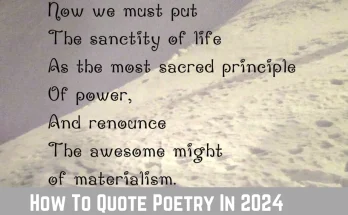“A Dragonfly in the Sun” is a brief and evocative poem by Zulfikar Ghose that captures a fleeting moment in nature. The poem explores themes of transience, interconnectedness, and the appreciation of beauty in the present moment. Critical Analysis of Evidence of Genocide, The Loss of India, Critical Analysis of Disturbed Nights by Zulfikar Ghose are the related works on our website. You can also read the summary of Evidence of Genocide.
Major Themes in A Dragonfly in the Sun
The Transience of Beauty:
One of the central themes in “A Dragonfly in the Sun” is the transience of beauty. The poem highlights the fleeting nature of the dragonfly’s presence and its beauty. Ghose suggests that beauty, like the dragonfly, is ephemeral and easily overlooked.
The image of the dragonfly being “caught in the compass of a glance” emphasizes the brevity of the moment in which its beauty is observed. This theme prompts readers to reflect on the impermanence of beauty and the importance of appreciating it in the present moment.
Connection to Nature:
The poem explores the theme of connection to nature, particularly through the portrayal of the dragonfly. Ghose suggests that the dragonfly’s rhythmic movement is in harmony with the rhythm of the universe, symbolizing the interconnectedness of all living beings.
By drawing attention to the dragonfly’s place in the natural world, the poem emphasizes the need for humans to recognize and appreciate their connection to the larger ecosystem. This theme invites readers to reflect on their relationship with nature and the significance of the smallest creatures in the web of life.
Serenity and Stillness:
Ghose evokes a sense of serenity and stillness throughout the poem. The image of the dragonfly basking in the sun creates a tranquil atmosphere.
This theme prompts readers to slow down, take notice of the world around them, and find moments of peace in the midst of the busyness of life.
Ghose’s portrayal of the dragonfly’s moment of stillness encourages readers to cultivate mindfulness and appreciate the beauty and serenity present in the present moment.
Contemplation of Existence:
The poem invites readers to contemplate their own existence and the fleeting nature of life. The dragonfly serves as a metaphor for human life and the passing of time.
Ghose’s exploration of transience and the brevity of the dragonfly’s presence prompt readers to reflect on their own mortality and the significance of cherishing the moments that make up their existence. This theme encourages introspection and a deeper understanding of the value of each passing moment.
Appreciation of Beauty:
A theme that runs throughout the poem is the importance of appreciating beauty. Ghose encourages readers to take notice of the small, seemingly insignificant moments of beauty in life. The imagery of the dragonfly and the sun emphasizes the delicate and ethereal nature of beauty.
By emphasizing the transience of beauty, the poem underscores the need to be fully present and appreciate the beauty that surrounds us, even in the most fleeting moments.
Reflection on the Human Condition:
Beyond its exploration of nature and beauty, “A Dragonfly in the Sun” prompts reflection on the human condition.
The poem’s themes of transience, interconnectedness, and the appreciation of beauty in the present moment encourage readers to reflect on their own lives and the fleeting nature of human existence.
Ghose’s contemplation of these themes invites readers to consider the value of each passing moment and the significance of connecting with the world around them.
Conclusion:
Summary of A Dragonfly in the Sun” explores themes of the transience of beauty, the connection to nature, serenity and stillness, contemplation of existence, appreciation of beauty, and reflection on the human condition.
Through its imagery and contemplative tone, the poem encourages readers to recognize the fleeting nature of life and to appreciate the beauty and interconnectedness of the world around them. Ghose’s skillful exploration of these themes invites readers to reflect on their own existence and find meaning in the present moment.



